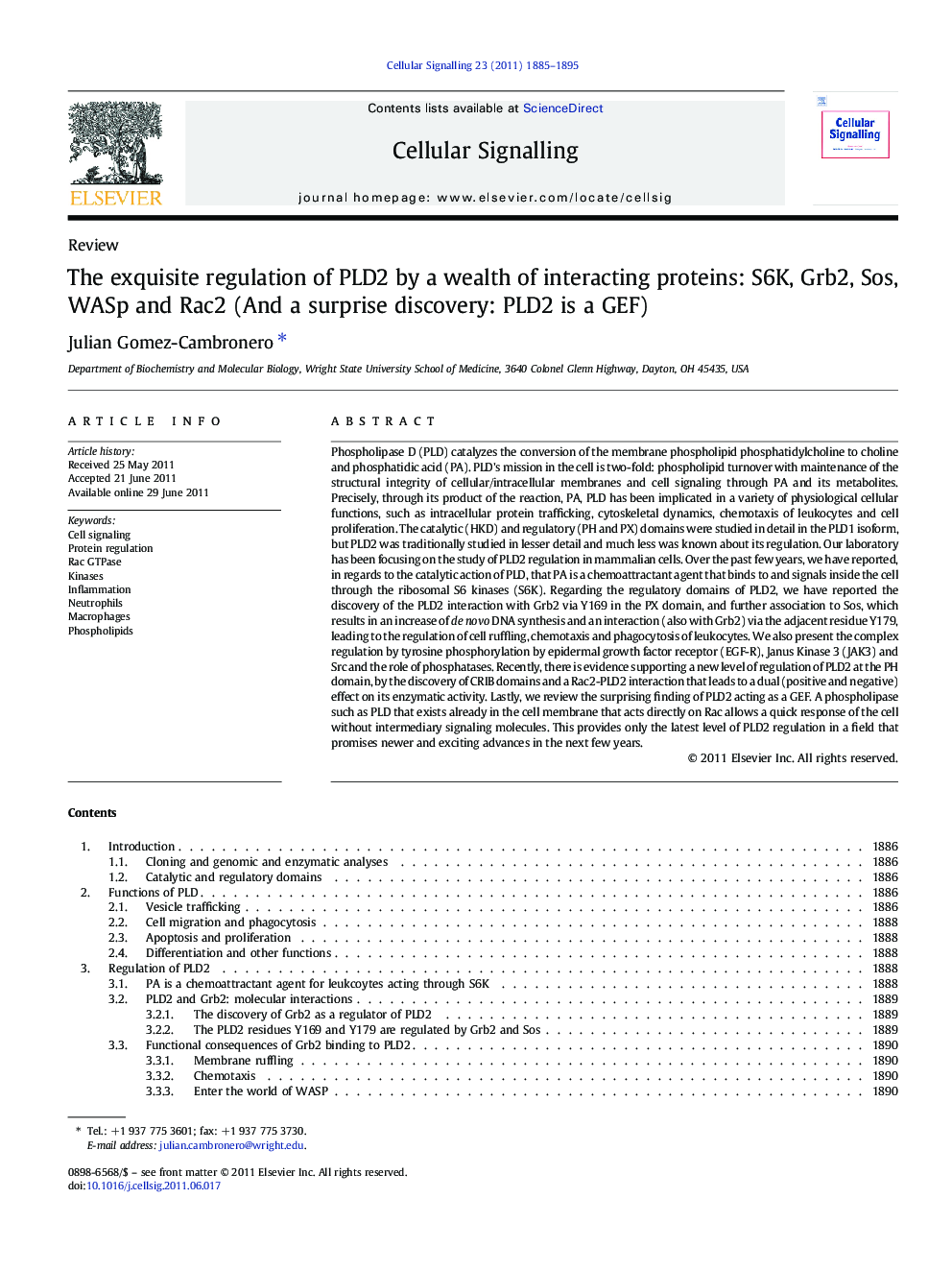| کد مقاله | کد نشریه | سال انتشار | مقاله انگلیسی | نسخه تمام متن |
|---|---|---|---|---|
| 10816561 | 1058579 | 2011 | 11 صفحه PDF | دانلود رایگان |
عنوان انگلیسی مقاله ISI
The exquisite regulation of PLD2 by a wealth of interacting proteins: S6K, Grb2, Sos, WASp and Rac2 (And a surprise discovery: PLD2 is a GEF)
دانلود مقاله + سفارش ترجمه
دانلود مقاله ISI انگلیسی
رایگان برای ایرانیان
کلمات کلیدی
موضوعات مرتبط
علوم زیستی و بیوفناوری
بیوشیمی، ژنتیک و زیست شناسی مولکولی
زیست شیمی
پیش نمایش صفحه اول مقاله

چکیده انگلیسی
Phospholipase D (PLD) catalyzes the conversion of the membrane phospholipid phosphatidylcholine to choline and phosphatidic acid (PA). PLD's mission in the cell is two-fold: phospholipid turnover with maintenance of the structural integrity of cellular/intracellular membranes and cell signaling through PA and its metabolites. Precisely, through its product of the reaction, PA, PLD has been implicated in a variety of physiological cellular functions, such as intracellular protein trafficking, cytoskeletal dynamics, chemotaxis of leukocytes and cell proliferation. The catalytic (HKD) and regulatory (PH and PX) domains were studied in detail in the PLD1 isoform, but PLD2 was traditionally studied in lesser detail and much less was known about its regulation. Our laboratory has been focusing on the study of PLD2 regulation in mammalian cells. Over the past few years, we have reported, in regards to the catalytic action of PLD, that PA is a chemoattractant agent that binds to and signals inside the cell through the ribosomal S6 kinases (S6K). Regarding the regulatory domains of PLD2, we have reported the discovery of the PLD2 interaction with Grb2 via Y169 in the PX domain, and further association to Sos, which results in an increase of de novo DNA synthesis and an interaction (also with Grb2) via the adjacent residue Y179, leading to the regulation of cell ruffling, chemotaxis and phagocytosis of leukocytes. We also present the complex regulation by tyrosine phosphorylation by epidermal growth factor receptor (EGF-R), Janus Kinase 3 (JAK3) and Src and the role of phosphatases. Recently, there is evidence supporting a new level of regulation of PLD2 at the PH domain, by the discovery of CRIB domains and a Rac2-PLD2 interaction that leads to a dual (positive and negative) effect on its enzymatic activity. Lastly, we review the surprising finding of PLD2 acting as a GEF. A phospholipase such as PLD that exists already in the cell membrane that acts directly on Rac allows a quick response of the cell without intermediary signaling molecules. This provides only the latest level of PLD2 regulation in a field that promises newer and exciting advances in the next few years.
ناشر
Database: Elsevier - ScienceDirect (ساینس دایرکت)
Journal: Cellular Signalling - Volume 23, Issue 12, December 2011, Pages 1885-1895
Journal: Cellular Signalling - Volume 23, Issue 12, December 2011, Pages 1885-1895
نویسندگان
Julian Gomez-Cambronero,